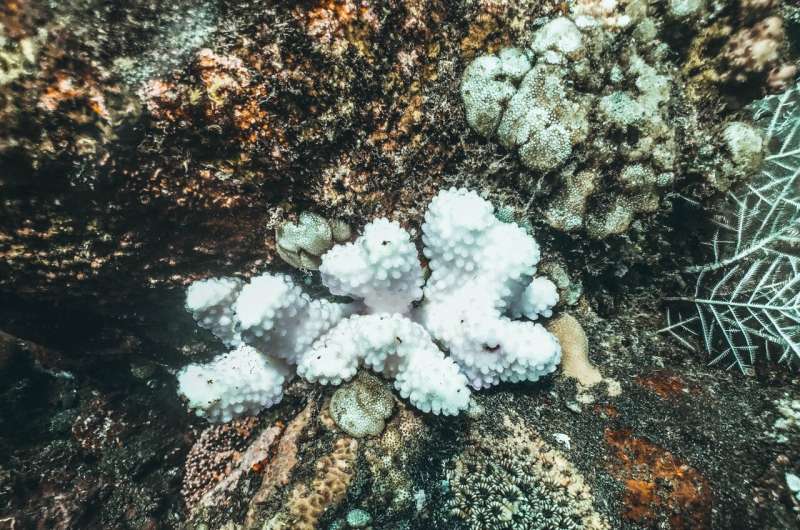This article has been reviewed according to Science X's editorial process and policies. Editors have highlighted the following attributes while ensuring the content's credibility:
fact-checked
trusted source
proofread
Microbes impact coral bleaching susceptibility, new study shows

A new study provides insights into the role of microbes and their interaction as drivers of interspecific differences in coral thermal bleaching. The study was published in the journal Applied and Environmental Microbiology.
"The diversity, community dynamic and interaction of coral-associated microorganisms play important roles in the health state and climate change response pattern of coral reefs," said lead study author Biao Chen, Ph.D., an assistant professor with the Coral Reef Research Center of China, School of Marine Science at Guangxi University.
"We urge the creation of more expansive coral reef microbial datasets on a global scale and recommend undertaking interdisciplinary research encompassing ecology, marine chemistry, physical oceanography and microbiomics." The researchers say that creation of the datasets is intended to unveil the crucial role of microorganisms in the adaptability of coral reef ecosystems amid the challenges posed by global warming.
The impacts of global warming have resulted in significant biodiversity losses and coral thermal bleaching in coral reef ecosystems. Coral reefs, also called coral holobionts, are composed of animal hosts, endosymbiotic Symbiodiniaceae (family of marine dinoflagellate), bacteria, archaea, fungi and viruses.
Corals have shown significant interspecific differences in bleaching severity and heat tolerance during heat wave events. While researchers know that the coral-associated microbiome plays a crucial role in regulating the environmental tolerance of coral reefs, the interactions between Symbiodiniaceae and fungi on differences in coral heat tolerance are unclear.
To fill this knowledge gap, Chen set out to study Huangyan Island, a reef in the South China Sea with a heightened risk of coral bleaching. This selection was deliberate, due to the notably higher sea surface temperatures of the coral reefs surrounding Huangyan Island compared to the Xisha Islands at the same latitude.
The researchers targeted 18 coral species extensively distributed in the tropical regions of the South China Sea. Their investigation focused on assessing bleaching proportions during the significant coral bleaching event that occurred there in 2020. This examination led to the establishment of a ranking system for the heat-bleaching susceptibility of these 18 coral species.
In the final stage of research, the investigators delved into the dynamic interactions within coral organisms, specifically examining the communities of Symbiodiniaceae and fungi. They identified potential correlations between ecological indicators of Symbiodiniaceae and fungi communities and the susceptibility ranking of coral heat bleaching.
The study found that the heat-tolerant Symbiodiniaceae dominated in the microbial community of corals in Huangyan Island. The increase in fungal diversity and pathogen abundance has close associations with higher coral thermal bleaching susceptibility. The researchers constructed an interaction network between Symbiodiniaceae and fungi in corals, which indicated that restricting fungal parasitism and strong interaction network resilience would promote heat acclimatization of corals.
"Our study highlights the ecological effects of microbiome dynamics and interactions between Symbiodiniaceae and fungi on coral thermal bleaching susceptibility, providing insights into the role of microorganisms and their interaction as drivers of interspecific differences in coral thermal bleaching," Chen said.
"The study is poised to establish a preliminary groundwork for delving into the response patterns of coral-associated microorganisms to global warming."
More information: Applied and Environmental Microbiology (2024). doi.org/10.1128/aem.01939-23
Provided by American Society for Microbiology




















